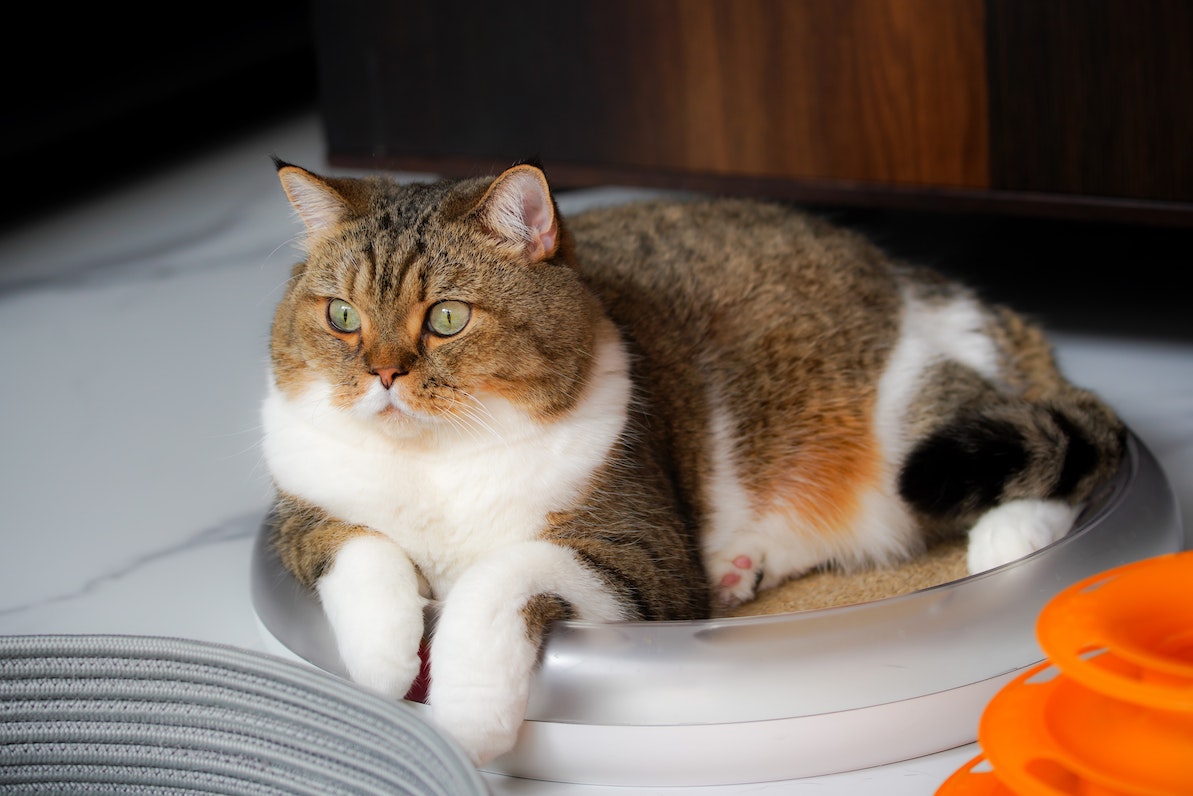Did you know that cats need far fewer carbohydrates than humans? In our last blog article we talked about cat food, what types there are and what you should look out for when buying. In this article, we'll take a closer look at the nutrients your cat needs and what cat food actually consists of.
What nutrients does a cat actually need?

To give you a better overview, we have put together a small food pyramid for you. As you can see, proteins and fats are the main components of the required nutrients in cat food. In the wild, cats only feed on hunted animals such as mice, which is why our cat food is formulated to simulate their diet in the wild. As illustrated here, a killed animal mainly has proteins and fats. Carbohydrates and vitamins, on the other hand, come up short here, but are not insignificant. But now let's dive into each level of the pyramid and see why these nutrients are so important for our four-legged friends.
proteins
Proteins, here of animal origin, are the main component of a cat's diet. They promote healthy growth in cats and provide energy in the form of amino acids, which is why cats need so much protein. Two of the most important amino acids are taurine and arginine. Taurine is important for the cat's metabolism and supports essential functions in the body such as the heart, eyes, digestion and fertility.
Arginine, on the other hand, is particularly important for the urea cycle. Both taurine and arginine cannot be produced by cats themselves and must therefore be ingested through food. Arginine and taurine are found in the innards, in the connective tissue of animal meat.
fats
Fats and fatty acids also provide the cat with energy and ensure that it is always on the go. Again, there are two important fatty acids that should not be missing in your cat's diet. Linoleic acid is an essential fatty acid (check why and what benefits). Arachidonic acid cannot be produced by the cat itself and must therefore be obtained from the diet.
fiber
Fiber is important because it stimulates the cat's digestion. The more a cat moves, the faster its metabolism. As cats get older, their activity levels tend to decrease a bit and their metabolism slows down as well. Older cats in particular need a high-fiber diet to support their digestion.
carbohydrates
Carbohydrates are a little scarce in a cat's diet, and for good reason. Cats are very sensitive to carbohydrates because in the wild they only eat animals that also contain carbohydrates. As a result, their digestive system has a harder time digesting carbohydrates, and wheat in particular makes life difficult for the animals. Rice, potatoes and oats, on the other hand, are much better tolerated and have a calming effect on the gastrointestinal tract. Fun fact: did you know that dry food contains more carbohydrates than wet food?
minerals
Minerals such as calcium, magnesium and phosphorus are important for healthy bones and teeth. They also boost metabolism and strengthen both nerves and muscles in the cat. Younger cats in particular need minerals so that they can optimally develop physically.
vitamins
Vitamins may not be at the bottom of the pyramid, but they shouldn't be missing! Vitamins support the cat's immune system and ensure a shiny coat, healthy skin and other important bodily functions.
These nutrients are generally found in cat food. Depending on the age and state of health of your cat, its needs change and it needs less fat, for example, but more fiber. If you think your cat may be deficient, consult your vet before making any major changes to your cat's diet.
If you want to know more about cat food, read our article on cat food or see what to look for in good quality cat food.



